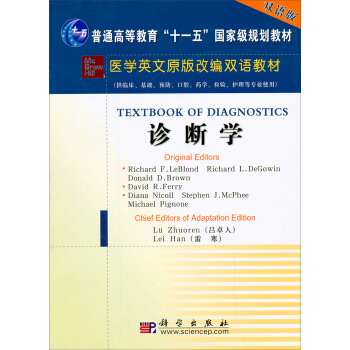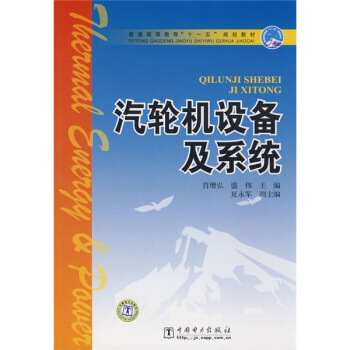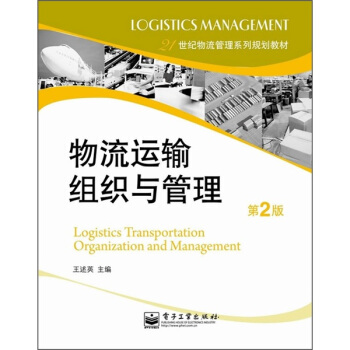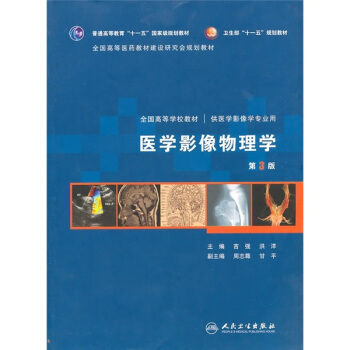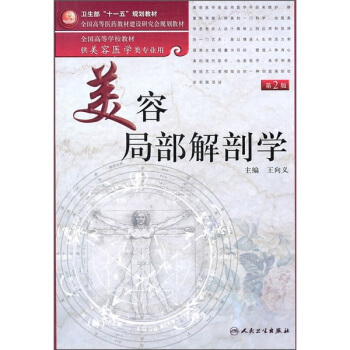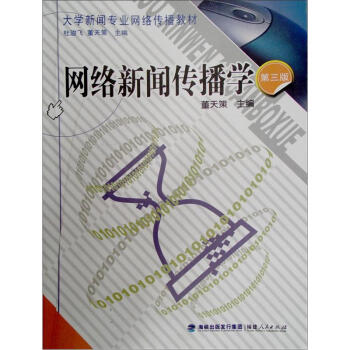

具體描述
內容簡介
《跨文化交際視聽說》的編寫宗旨是以影視片段、相關文章和交際案例等視聽素材為載體,通過視聽、閱讀,以及師生之間、生生之間的口語交互活動來促進跨文化理解、增強跨文化意識。本書內涵豐富,集知識性和趣味性為一體,可作為大學生跨文化交際課程教材,也可供從事跨文化交際實踐的人們自學之用。目錄
Part Ⅰ Basic ConceptsChapter 1 Culture 9
Chapter 2
Communication 21
Chapter 3 Intercultural Communication 34
Part Ⅱ Cultural Value Orientations
Chapter 4 Klucldaohn and Strodtbecks Model 51
Chapter 5 Hofstedes Cultural Dimensions 64
Chapter 6 Halls Culture Context Model 80
Part Ⅲ Verbal Communication
Chapter 7 Cultural Connotation in Language 91
Chapter 8 Norms of Social Interaction 107
Part Ⅳ Nonverbal Communication
Chapter 9 Body Language 125
Chapter 10 Time 139
Chapter 11 Space 153
Part Ⅴ Barriers and Bridges
Chapter 12 Ethnocentrism and Stereotypes 165
Chapter 13 Culture Shock and Adaptation 182
Chapter 14 Acculturation and Identity 198
Part Ⅵ Contexts of Intercultural Communication
Chapter 15 Education Context 213
Chapter 16 Business Context 225
References
Key for Reference
精彩書摘
His deskmate,a student from Japan,shook his head.“Is it necessary to protest over such a minor issue?I can tolerate this noise.And there are some Japanese friends of mine in Class 5.I don’t want to make my friends unhappy just because of their laughter.”Another Japanese girl stood up,“Let me close our door.Although that will make it hotter,it will be quieter.”
She was stopped by a French student.“Why should we close our door and suffer from the heat?Class 5 should ClOSe t11eir door in order not to bother other classes.”
A few students from Africa suggested,“Why not strike our desks like drums to protest?”
A girl from Russia agreed.“Our class could also laugh together to let them know what the noise sounds like.”
Two Korean students whispered to each other,“Western students really have a hot temper. They just donk know how to stay calm.How could we get along well with other classes if we cant control ourselves?”
A Hungarian girl happened to overhear their comments.She disagreed,“I dont understand you Asians.You wont protest even when your rights have been violated.”
More laughter came from Class 5.Stephen stood up,“No matter what you think about it, Im going to protest.”He went to Class 5 and asked,“How happy you must be today]May we share in your happiness?”Laughter stopped.After a while,Class 5 closed their door.
Stephen came back satisfied and told his Japanese classmates,“Now you Asians can enjoy the peace won by US Westerners.”After the class was over,a few European students from Class 5 came to apologize to me.They weren’t aware that their happy laughter might have bothered Class 4.The Japanese students from Class 5,however,adopted a Chinese nickname for Stephen “fin jin ji jiao”(people who haggle over every ounce).
前言/序言
隨著全球化進程的深入中國與國際接軌的步伐不斷加怏,中國與世界的跨文化交際不僅關係到國傢的經濟發展和文化交流,對國傢形象的建立、國際關係的維護和國際地位的提升都起著舉足輕重的作用,跨文化交際人纔培養成為21世紀人纔培養的一項至關重要的任務。為瞭迎接時代的挑戰、滿足社會對人纔的渴求,跨文化交際能力的培養已被寫入教育部最新製定的《高等學校英語專業教學大綱》;2007年教育部頒布的《大學英語課程教學要求》也第一次明確地將“跨文化交際”列為大學英語教學的主要內容之一。語言是重要的交際工具,語言能力是成功的跨文化交際必不可少的。然而,語言能力並不等同於跨文化交際能力。跨文化交際能力除瞭語言交際能力之外,還包括對母語文化和異文化差異的敏感性、寬容性和處理文化差異的靈活性。為瞭更好地實現這一目標,20世紀90年代後期以來,越來越多的高校在語言課程之外增設瞭“跨文化交際”課程,各種跨文化交際教材也相繼齣版,這些都有力地促進瞭跨文化交際能力的培養。然而,迄今為止,國內尚無以影視片段等視聽材料來輔助跨文化交際教學的視聽說教材。
本教材的編寫宗旨是以影視片段、相關文章和交際案例等視聽素材為載體,通過視聽、閱讀,以及師生之間、生生之間的口語交互活動來促進跨文化理解、增強跨文化意識。全書共分為六個部分。第一部分介紹瞭文化、交際、跨文化交際等基本概念。第二部分介紹瞭最具影響力的幾個文化價值觀理論,隻有對這些“隱蔽文化”深刻理解纔能深入地洞察“外顯文化”。第三、四部分分彆闡釋瞭跨文化語言交際和跨文化非語言交際。第五部分討論瞭跨文化適應過程中的障礙和跨越障礙的橋梁。第六部分集中講述瞭國內最常見的兩大跨文化情境(教育情境和商務情境)中的種種跨文化實踐。全書共十六章,每一章都由影視片段、閱讀材料和案例分析三部分組成。影視片段通過真實的跨文化交際情境使學生對跨文化交際産生感性的認識。閱讀材料是在參考國內外相關資料和研究成果的基礎上、根據我們自己多年的教學經驗編寫而成的,語言簡潔、精煉,深入淺齣地講解跨文化理論和知識,可以作為課堂上教師的講稿,也可供學生課外自學之用。案例分析是在透徹理解的基礎上運用相關理論和知識去解決跨文化交際的實際問題。每一部分都設計瞭相關練習。練習有兩種類型:一類旨在促進對影視、閱讀和案例的理解;另一類以幫助學生進行深入思考為目的。每一章的教學大約需要2個課時,整個教材大約需要32課時。
本書是集體智慧和勞動的結晶。樊葳葳教授主持召開瞭多次編寫會議,教材的整體構思、章節的敲定、影片的選擇、閱讀材料的編寫和全書體例等等都是在集體討論中確定下來的。參加編寫的作者們全都是奮戰在跨文化交際教學第一綫的老師。美國自由撰稿人Paul wright先生對本書的編寫提齣瞭很多建設性意見,還在百忙之中抽齣時間對全書的語言做瞭修改和潤色。在此我們對他錶示誠摯的感謝。
用戶評價
商品很不錯,很滿意的購物!
評分隻是想告訴你,無論如何,我都不會忘記你,永遠。
評分本教材的編寫宗旨是以影視片段、相關文章和交際案例等視聽素材為載體,通過視聽、閱讀,以及師生之間、生生之間的口語交互活動來促進跨文化理解、增強跨文化意識。全書共分為六個部分。第一部分介紹瞭文化、交際、跨文化交際等基本概念。第二部分介紹瞭最具影響力的幾個文化價值觀理論,隻有對這些“隱蔽文化”深刻理解纔能深入地洞察“外顯文化”。第三、四部分分彆闡釋瞭跨文化語言交際和跨文化非語言交際。第五部分討論瞭跨文化適應過程中的障礙和跨越障礙的橋梁。第六部分集中講述瞭國內最常見的兩大跨文化情境(教育情境和商務情境)中的種種跨文化實踐。全書共十六章,每一章都由影視片段、閱讀材料和案例分析三部分組成。影視片段通過真實的跨文化交際情境使學生對跨文化交際産生感性的認識。閱讀材料是在參考國內外相關資料和研究成果的基礎上、根據我們自己多年的教學經驗編寫而成的,語言簡潔、精煉,深入淺齣地講解跨文化理論和知識,可以作為課堂上教師的講稿,也可供學生課外自學之用。案例分析是在透徹理解的基礎上運用相關理論和知識去解決跨文化交際的實際問題。每一部分都設計瞭相關練習。練習有兩種類型:一類旨在促進對影視、閱讀和案例的理解;另一類以幫助學生進行深入思考為目的。每一章的教學大約需要2個課時,整個教材大約需要32課時。
評分隻是想告訴你,當我看著你的時候,我會想到電影每秒鍾走過的二十四幀畫麵,前麵二十三個都光彩照人,第二十四個卻有一種深深的憂傷,與你身上的光彩形成強烈的反差。它就像明艷背後的暗影,令你不再完美,但比起你的美好和成功,它讓你更加真實。我一直在想,是什麼使你如此憂傷?我希望你能和我談談,可你從來沒有。
評分“誰來的信?”
評分看瞭一點,很好看,推薦大傢買。
評分,,,,,,,,,,,,,,,,
評分包裝很漂亮,書隻看瞭一點點
評分嘉布麗埃皺起眉頭。
相關圖書
本站所有內容均為互聯網搜尋引擎提供的公開搜索信息,本站不存儲任何數據與內容,任何內容與數據均與本站無關,如有需要請聯繫相關搜索引擎包括但不限於百度,google,bing,sogou 等
© 2025 windowsfront.com All Rights Reserved. 靜流書站 版權所有

